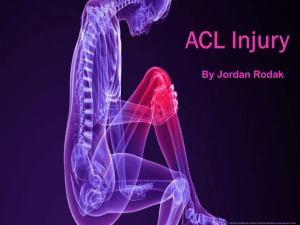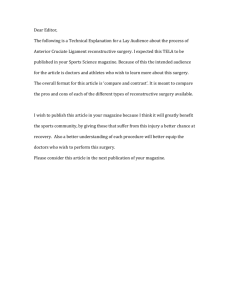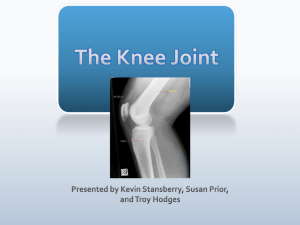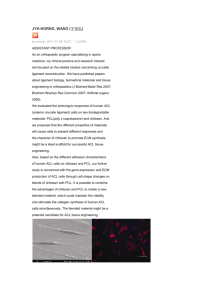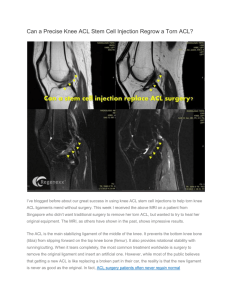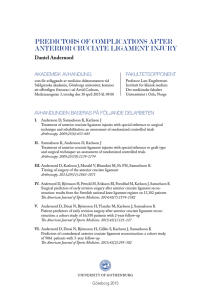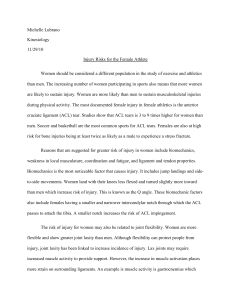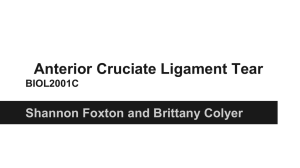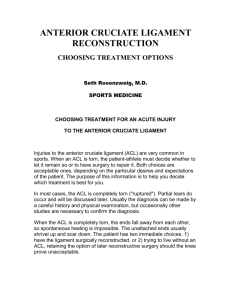Anterior Cruciate Ligament Reconstructive Surgery
advertisement
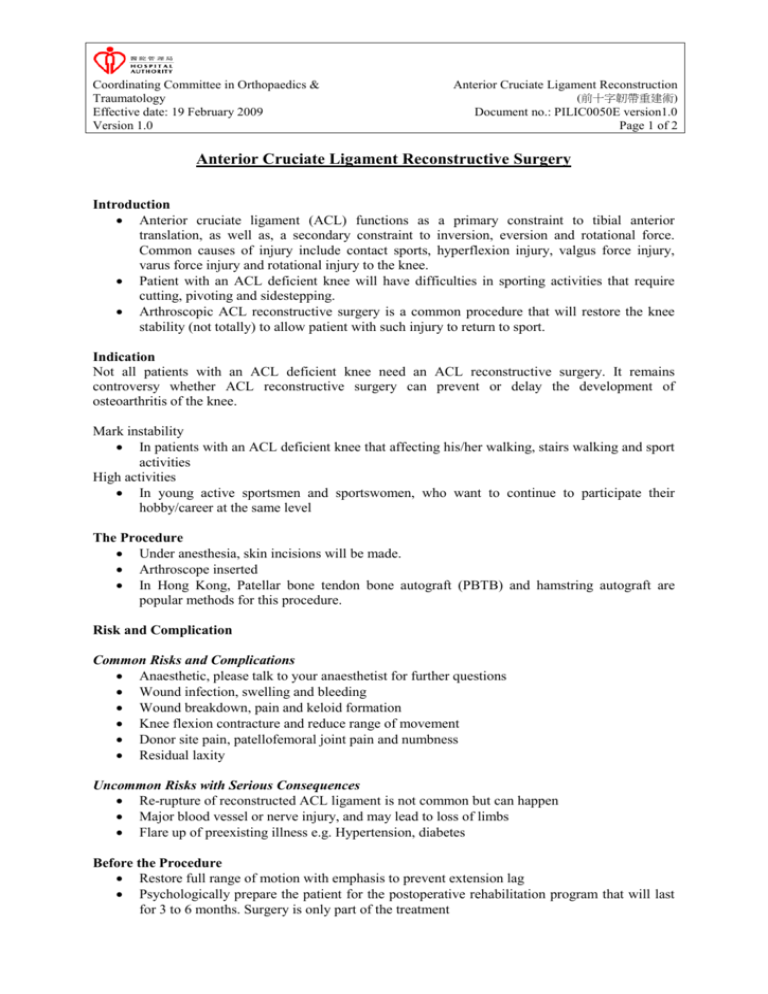
Coordinating Committee in Orthopaedics & Traumatology Effective date: 19 February 2009 Version 1.0 Anterior Cruciate Ligament Reconstruction (前十字韌帶重建術) Document no.: PILIC0050E version1.0 Page 1 of 2 Anterior Cruciate Ligament Reconstructive Surgery Introduction Anterior cruciate ligament (ACL) functions as a primary constraint to tibial anterior translation, as well as, a secondary constraint to inversion, eversion and rotational force. Common causes of injury include contact sports, hyperflexion injury, valgus force injury, varus force injury and rotational injury to the knee. Patient with an ACL deficient knee will have difficulties in sporting activities that require cutting, pivoting and sidestepping. Arthroscopic ACL reconstructive surgery is a common procedure that will restore the knee stability (not totally) to allow patient with such injury to return to sport. Indication Not all patients with an ACL deficient knee need an ACL reconstructive surgery. It remains controversy whether ACL reconstructive surgery can prevent or delay the development of osteoarthritis of the knee. Mark instability In patients with an ACL deficient knee that affecting his/her walking, stairs walking and sport activities High activities In young active sportsmen and sportswomen, who want to continue to participate their hobby/career at the same level The Procedure Under anesthesia, skin incisions will be made. Arthroscope inserted In Hong Kong, Patellar bone tendon bone autograft (PBTB) and hamstring autograft are popular methods for this procedure. Risk and Complication Common Risks and Complications Anaesthetic, please talk to your anaesthetist for further questions Wound infection, swelling and bleeding Wound breakdown, pain and keloid formation Knee flexion contracture and reduce range of movement Donor site pain, patellofemoral joint pain and numbness Residual laxity Uncommon Risks with Serious Consequences Re-rupture of reconstructed ACL ligament is not common but can happen Major blood vessel or nerve injury, and may lead to loss of limbs Flare up of preexisting illness e.g. Hypertension, diabetes Before the Procedure Restore full range of motion with emphasis to prevent extension lag Psychologically prepare the patient for the postoperative rehabilitation program that will last for 3 to 6 months. Surgery is only part of the treatment Coordinating Committee in Orthopaedics & Traumatology Effective date: 19 February 2009 Version 1.0 Anterior Cruciate Ligament Reconstruction (前十字韌帶重建術) Document no.: PILIC0050E version1.0 Page 2 of 2 Blood tests, X ray, correct and optimizing existing illness. e.g. diabetes, asthma Physiotherapist assessment on muscle strength, baseline measurement, breathing exercise and physical conditioning of all unaffected limbs Fasting for 8 hours before surgery After the Procedure Diet as tolerated when fully conscious, usually normal diet by 24 hours Oral, intravenous or intramuscular analgesic as require. Pains usually settle down quickly after 2 to 3 days Cryotherapy and elevation to control swelling If there is a drain, it will usually be removed after 1 to 3 days Possible Additional Procedure Infection, it may require arthroscopic lavage, debridement and/or removal of implant Stiffness, it may require manipulation under anaesthetic Re-rupture Fracture of patella, it may require open reduction and internal fixation Alternative Treatment Conservative treatments This can include muscle training exercise or bracing. Patient can also adjust their lifestyle to decrease their high demanding sport activities Operations using other choice of reconstructive materials Allograft. No donor site pain and risk of disease transmission Availability problem in Hong Kong. Graft strength decrease with the procurement process Quadriceps tendon. Strong graft. Only one bone end Contralateral side PBTB. Not popular in Hong Kong Follow Up Most patients can weight bear with support after a few days and most patients can be discharge within one week. Braces are occasionally prescribe Most patient can resume contact sport in 6 to 12 months You should keep your wound clean and dry You must follow instructions strictly on taking medication, see the doctor as scheduled If you have any excessive bleeding, collapse, severe pain or signs of infection at your wound site such as redness, swelling or fever, see your doctor immediately or attend the nearby Accident and Emergency Department Remarks The information contained is very general, the list of complications is not exhaustive and other unforeseen complications may occasionally occur. In special patient groups, the actual risk may be different. For further information please contact your doctor.

